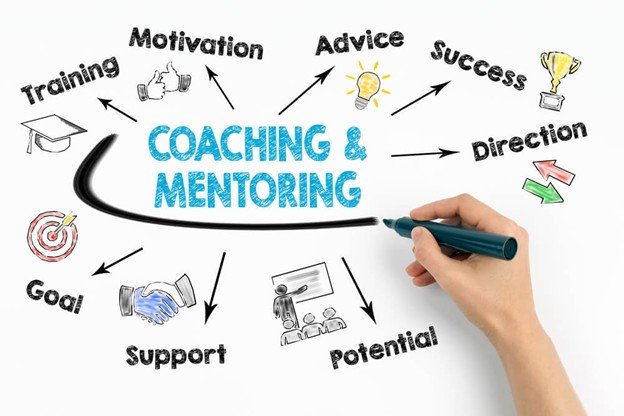In the modern organizational lexicon, “coaching” and “mentoring” are frequently used as interchangeable synonyms for employee development. This casual conflation, however, masks a critical strategic distinction. While both are powerful catalysts for unlocking human potential, they are fundamentally different methodologies, each with a unique purpose, structure, and application. Coaching is a precise, performance-oriented intervention designed to hone specific skills, while mentoring is a long-term, wisdom-based relationship focused on holistic career growth. Understanding when and how to deploy each is not merely a matter of semantics; it is a hallmark of sophisticated talent management and a crucial driver of organizational success. [1][2] For any business aiming to cultivate a resilient, high-performing workforce, mastering the strategic application of both coaching and mentoring is an absolute imperative. [3]
Methodology and Mindset: The Core Operational Differences
The fundamental divergence between coaching and mentoring lies in their core methodologies and the mindsets of the practitioners. Coaching is a structured, often short-term process engineered to elicit solutions from within the individual. [4][5] A certified coach is not required to be a subject matter expert in the coachee’s field; rather, they are an expert in process and psychology. [6][7] They operate on the Socratic premise that the individual possesses the intrinsic capacity to solve their own challenges. [7] This is achieved through powerful, open-ended questioning, active listening, and reflective feedback, often guided by established frameworks like the GROW model (Goal, Reality, Options, Will). [8][9] The coach’s role is to act as a facilitator, holding up a mirror to help the coachee gain clarity, challenge their own assumptions, and build self-reliance. [7][10] The focus is transactional and performance-driven, targeting measurable improvements in specific competencies or behaviors within a defined timeframe. [11][12]
Mentoring, conversely, is a relationship-driven, long-term alliance built on the transfer of wisdom. [13][14] A mentor is, by definition, a seasoned individual with significant experience in the mentee’s field or organization. [5][15] Their primary function is not to ask questions, but to provide answers, share insights, and offer guidance based on their own hard-won experience. [13][16] This relationship is less about structured problem-solving and more about holistic development, encompassing career navigation, political acumen, and personal growth. [17][18] The agenda is typically driven by the mentee, who seeks out the mentor for advice, support, and access to a broader network. [19] While a coach helps an individual discover their own path, a mentor shares the map of the path they have already walked, offering shortcuts and highlighting potential pitfalls along the way. [10][14] This creates a nurturing, developmental bond that often extends far beyond the achievement of any single objective. [20]
Strategic Application: Aligning the Tool with the Organizational Goal
The decision to use coaching or mentoring should be a deliberate strategic choice aligned with specific organizational objectives. Coaching yields the highest return on investment when deployed to address immediate, performance-related needs. [12][18] It is the ideal tool for onboarding a new leader who needs to accelerate their transition, sharpening a high-potential employee’s presentation skills before a critical client meeting, or helping a manager overcome a specific challenge like poor delegation. [15][21] For example, a newly promoted sales director struggling to meet team targets could engage a coach. The coach wouldn’t teach them how to sell, but would use structured sessions to help the director identify their own leadership blind spots, develop new management strategies, and create an action plan for which they are held accountable. [2][22] The outcomes are tangible and directly impact near-term business results, with studies showing that 70% of coached individuals report improved work performance. [12]
Mentoring serves a different, more longitudinal strategic purpose focused on long-term organizational health. [18][20] It is a cornerstone of effective succession planning, knowledge retention, and fostering a strong corporate culture. [21][23] Organizations like Mastercard and Novartis have implemented large-scale mentoring programs to break down internal silos and accelerate the integration of new talent. [23] Consider a junior engineer paired with a senior vice president of engineering. The mentor provides invaluable context on the company’s culture, helps the mentee navigate complex projects, and advocates for them in high-level discussions, preparing them for future leadership roles over several years. This relationship builds institutional loyalty and ensures that critical, experience-based knowledge is passed down through generations of employees. Research underscores this value, with one study finding that participants in mentoring programs were promoted twice as fast as their peers. [24]
The Blended Approach: Cultivating a Comprehensive Developmental Ecosystem
While distinct, coaching and mentoring are not mutually exclusive; they are complementary tools that, when used in concert, create a powerful ecosystem for continuous development. The most forward-thinking organizations recognize that employees benefit from both targeted skill enhancement and broad career guidance. [16][25] A high-potential employee might work with a coach for six months to improve their executive presence and communication skills (a specific, performance-based goal) while simultaneously maintaining a multi-year relationship with a mentor who advises them on long-term career moves and helps them build their professional network. [22] This blended approach addresses both immediate needs and future potential, leading to higher employee engagement, improved retention, and a more agile and resilient leadership pipeline. [1][23]
By building a culture that values and facilitates both coaching and mentoring, organizations demonstrate a profound commitment to their people. [2][25] This involves training managers in coaching techniques for daily interactions, establishing formal mentoring programs that connect junior and senior talent, and providing access to external professional coaches for targeted interventions. [21] Companies that make this investment see tangible returns, not just in performance metrics, but in the creation of a learning organization where every employee feels supported and empowered to achieve their full potential. [3][4] Ultimately, the strategic integration of coaching and mentoring transforms human resources from a support function into a central driver of business value and sustained competitive advantage.



